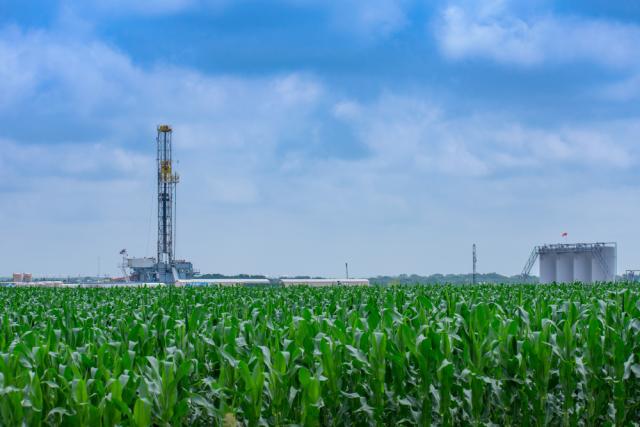
(Source: Shutterstock.com)
U.S. shale producers are expected to restore roughly 500,000 bbl/d of crude output by the end of June, according to crude buyers and analysts, amounting to a quarter of what they shut since the coronavirus pandemic cut fuel demand and hammered oil prices.
Such a swift rise in U.S. production would complicate efforts by top producers Saudi Arabia and Russia to encourage global allies to fulfill their pledges to make record production cuts.
They, along with allies in a group known as OPEC+, agreed to big cuts in April to balance oil supply to prop up prices, and anticipated similar economic cuts by the likes of the U.S. as well.
U.S. producers cut supply by roughly 2 MMbbl/d. But the recovery in benchmark oil prices to around $40 per barrel makes some shale output profitable again, even though that level is unlikely to spur additional new drilling activity. Larger producers are re-opening the taps in low-cost plays in Texas but also in expensive shale basins in North Dakota and Oklahoma.
“With prices where they are now, if they stay above $30, I wouldn’t expect any significant curtailments from us in Q3 or beyond,” Devon Energy Corp. CEO David Hager said at a J.P. Morgan energy conference June 16.
Fracking activity tracker Primary Vision estimates as much as 500,000 bbl/d of production will return to the market by month-end, while Rystad Energy estimates 400,000 bbl/d could be added to the market between June and August.
“Some of the bigger guys that we work with are starting to turn everything back on,” said Joshua Wade, an oil marketer in Oklahoma, who works with producers to transport barrels and buys lease volumes.
Producers are also pumping oil out of storage, which filled when demand plummeted as billions of people worldwide stopped traveling due to lockdowns to slow the spread of coronavirus.
Weekly oil data shows U.S. output at about 10.5 MMbbl/d, its lowest since March 2018 and off the all-time monthly record of about 12.9 MMbbl/d reached in November, according to U.S. Energy Information Administration data.
Much of the declines came from shale wells that were choked back but not shut-in completely, several shale company executives said.
“We were able to shut in thousands of wells with really minimal time and effort. And we can bring those back on with really minimal time and effort, too,” EOG Resources Inc. COO Lloyd Helms said at a June 16 industry conference.
Diamondback Energy Inc. focused on curtailing volumes rather than fully shutting wells, Adam Lawlis, vice president of investor relations, said in a statement.
About 8,000 bbl/d of the 10,000 bbl/d of oil that shale producer Devon curtailed came from choking back wells or slightly delaying wells.
“We’re in the process of bringing all of that back on,” Hager said.
Prices in cash markets reflect anticipated new supply. Crude oil for July delivery out of Midland, Texas, the heart of the Permian Basin, sank to a discount to benchmark futures while Bakken prices fell to their weakest levels in a month last week.
As of June 12 in North Dakota, where the Bakken is primarily located, about 60,000 bbl/d of production had come back online from mid-May, leaving 450,000 still shut, according to the North Dakota Department of Mineral Resources.
Companies including private-equity-backed Lime Rock Resources have turned wells in the Bakken back on while Continental Resources told pumpers to be ready to ramp up activity by July 1, sources familiar with the matter said.
Neither company responded to requests for comment.
ConocoPhillips is thinking of bringing back curtailed volumes over the next few months after shutting in a third of its production, CEO Ryan Lance told research firm IHS Markit. The company will also restore 100,000 bbl/d in shut-ins in Alaska by July.
The increase in production may not last, analysts said. North American oil companies have slashed spending by 35%, and U.S. rig counts have dropped to a record low. Since shale well output declines by more than 60% after the first year, the reduced spend on drilling will weigh on shale production over the long term, sources at shale companies said.
Producers also cautioned that rolling coronavirus outbreaks currently occurring in the United States may continue to restrict fuel demand.
One Bakken producer said they are operating at just 15% of usual output, and oil prices would need to hit $43/bbl for output to fully resume.
“Oil going to $40 for a fleeting moment isn’t going to be enough for some of our stronger operators to say, ‘Okay, I’m going to just turn the turn the tap on.’ They need to see it be sustainable,” Northern Oil and Gas CEO Nicholas O’Grady said.
Recommended Reading
Dividends Declared in the Week of Aug. 26
2024-08-30 - Here is a selection of dividends declared from select upstream and service and supply companies.
Talos Energy CEO Tim Duncan Steps Down; Mills to Take Helm
2024-08-30 - An analyst said Talos Energy President and CEO Tim Duncan was forced out over share price performance, although other factors may have played a role.
HNR Acquisition to Rebrand as EON Resources Inc.
2024-08-29 - HNR’s name change to EON Resources Inc. and a new ticker symbol, “EONR,” will take effect when trading commences on Sept. 18.
Hunting Wins Contracts for OOR Services to North Sea Operators
2024-08-29 - Hunting is securing contracts worth up to $60 million to deliver organic oil recovery technology to increase recoverable reserves for North Sea operators.
GreenFire Appoints Rob Klenner as President to Deliver Geothermal Solutions
2024-08-27 - As president of GreenFire Energy, Rob Klenner will be responsible for overseeing GreenFire’s geothermal energy projects.





